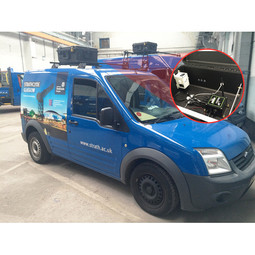Overview
 |
Indoor Air Quality Monitoring |
Applicable Industries
Applicable Functions
Case Studies
Market Size
|
The global indoor air quality monitoring market is expected to grow from USD 2.5 billion in 2015 to USD 4.6 billion by 2022, at a CAGR of 9.22% between 2016 and 2022. Source: Markets & Markets The global indoor air quality monitoring market is projected to reach USD 4.7 Billion by 2024 at a CAGR of over 9%. Source: Techsci Research |
Business Viewpoint
|
What is the main business value of indoor air quality monitoring (IAQ)? Indoor air quality has a significant impact on productivity, health and their general sense of wellbeing. A wide range of studies demonstrates the influence of ambient air pollution indicators such as temperature, humidity and CO2 levels on employees. The concept of human wellbeing is critically important but can be too vague to guide investment decisions in new monitoring and mitigation systems. However, wellbeing can be quantified to estimate business value and guide investment decisions by focusing on several measurable indicators: employee healthcare insurance costs, the frequency of sick days, worker productivity, and employee turnover. What are the typical applications for IAQ monitoring? Applications differ across facilities. For example, the applications relevant to a chemical factory will differ from those relevant to a hospital. However, several applications are typical across a wide range of facilities.
What strategies can be used to improve indoor air quality when monitoring identified an issue? Indoor air quality is not easily defined. It is a constantly changing interaction of operational and environmental factors that impact the types, levels, and importance of pollutants in indoor environments. These factors include the sources of pollutants, system design, ventilation system maintenance and operation, and temperature and humidity in the external environment. In addition, there are many other factors that affect the perception of indoor air quality. Controlling indoor air quality involves integrating three main strategies:
|
Stakeholder Viewpoint
|
Building Owners and Facility Managers: Building owners and facility managers prioritize IAQ monitoring to maintain healthy indoor environments, reduce liability risks, and preserve property value. They rely on IAQ data to identify potential issues, optimize building operations, and implement targeted interventions to improve indoor air quality. Occupants: Occupants value IAQ monitoring as it directly impacts their health, comfort, and well-being. They appreciate transparency regarding indoor air quality conditions and expect prompt action from building management in response to IAQ concerns. IAQ monitoring systems can also empower occupants with real-time feedback and personalized recommendations for behavior modification. |
Technology Viewpoint
|
How do indoor air quality monitoring (IAQ) sensors work? IAQ sensors work by detecting volatile organic compounds (VOCs) and odors. By measuring the total volatile organic compounds (TVOC) and applying it to a rating scale, these sensors provide the data needed by connected systems to track, analyze, and clean air in the ambient environment. The sensor chips are typically just a few millimeters in width, and can easily fit within the existing electronics of exhaust fans, air filtration systems, and HVAC (Heating, ventilation, and air conditioning) systems. They can also be installed externally in brownfield environments.
|
Data Viewpoint
|
How is data obtained by indoor air quality monitoring (IAQ) systems? IAQ data comes from indoor air quality sensors (IAQ sensors) which are devices that measure the air quality within and around facilities as it relates to the health of facility occupants. IAQ sensors are used to obtain the following data:
Real-time data can be analyzed against historical data, defined thresholds, or simulation data to guide management decision making or to trigger automated actions such as alarms, HVAC system controls, or equipment shutdown. For example, in a mine alerts can be generated when defined thresholds are exceeded in order to advise workers to put on masks in the case of a gas leak. What are the methods for assessing IAQ? There are two main methods for assessing the quality of indoor air:
Real-time monitoring is increasing in prevalence due to the reduction in sensor and connectivity costs. Regardless of the method, the accuracy of the data depends on the proper operation of sensors and/or handling of the samples. Strict quality assurance procedures such as equipment calibration and operation in accordance with manufacturer instructions is necessary to maintain the reliability of the system. |
Deployment Challenges
|
Do indoor air quality monitoring (IAQ) sensors meet relevant standards? Indoor air quality in industrial facilities is increasingly important due to both regulation and employee expectations. As a result, organizations seek to meet specific standards such as those set by WELL Building Institute, ASHRAE, OHSA, LEED and RESET. Identifying the right standards and demonstrating adherence can be a challenge in geographies and industries where regulations are unclear, or where employee expectations are the primary driving motivation. How do HVAC systems impact IAQ? HVAC systems as a category include all of the equipment used to ventilate, heat and cool the building, to move the air around the building (ductwork), and to filter and clean the air. These systems can have a significant impact on how pollutants are distributed and removed from a facility. Because of the HVAC system's importance, good indoor air quality management includes attention to:
|



